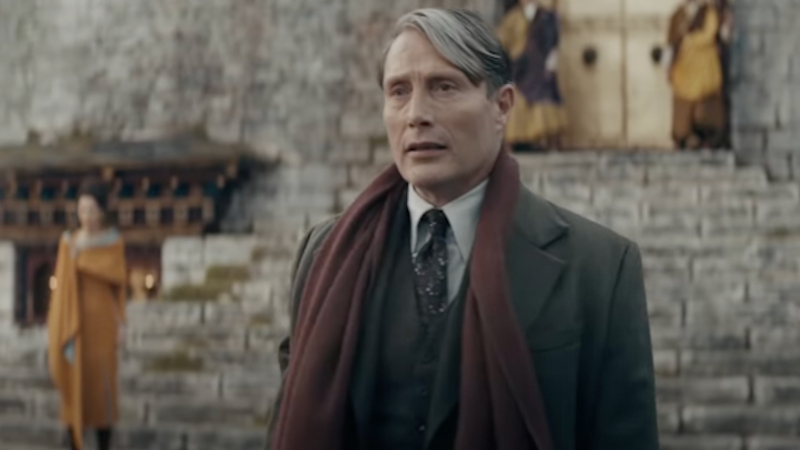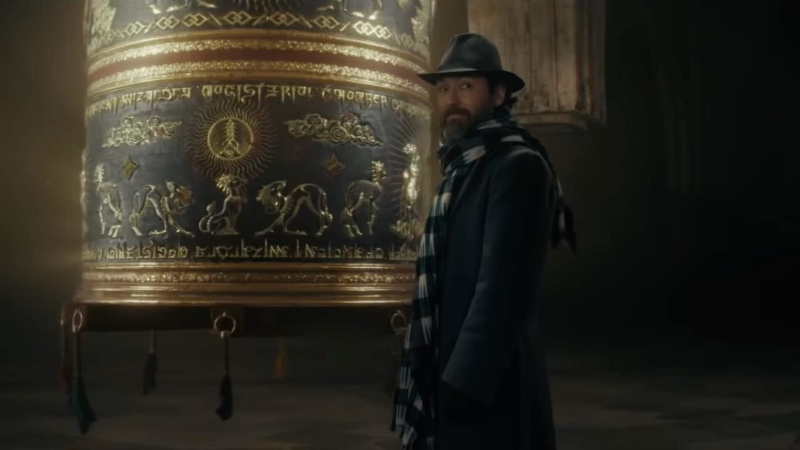Director – David Yates – 2022 – UK – Cert. 12a – 142m
***
In the 1930s, Newt Scamander, Albus Dumbledore and others attempt to prevent the despotic wizard Grindlewald from seizing power in a wizard’s election in J.K. Rowling’s third Fantastic Beasts movie – out in cinemas on Friday, April 8th
It’s difficult to know where to start with the third of J.K. Rowling’s self-penned Fantastic Beasts productions. A plethora of characters who apart from a few main ones quickly get confusing, some genuinely fantastic beasts as you would hope and some truly great underlying ideas poorly served by a narrative that doesn’t seem to understand basic storytelling in cinema. Perhaps if I’d immersed myself in all the books and films and whatever else is out there, it would make more sense (and no doubt this is what much of the dedicated fan audience will do), but as a standalone film, even one that’s a part of an ongoing saga, it makes little sense, although certain sequences are terrific.

The big ideas here are built around a creature called a Qilin (pronounced chillin) – a beast borrowed from Chinese and Far Eastern mythology – specifically an orphaned newborn Qilin that looks a lot like a golden version of Bambi, a resemblance underscored by the fate meted out to its mother in the opening reel. The Qilin possesses a remarkable gift: it can see inside the soul and is able to tell who is pure of heart and who is not (most muggles and wizards, it seems, are neither one nor the other but somewhere in between). On finding that rare, pure soul, the Qilin will bow down before it, showing the world that soul’s true, pure nature.
All of which comes in very useful in the event of elections to lead the wizarding community, because, you see, you can take, say, three electoral candidates and have the Qilin walk around them and identify who is particularly good or particularly bad. Such an election is coming up, with the ceremony for the result announcement centred around a mountain monastery in Bhutan.

Somewhere in the course of the narrative, the villainous wizard Gellert Grindlewald (Mads Mikkelson replacing Johnny Depp from the previous film) becomes an election candidate. He’s already killed what he believes to be the only living Qilin offspring, and resurrected the beast under his control so that it will bear false witness and identify him as good when he isn’t.
However, he’s unaware that this creature is but one of a pair of twins, the latter having been rescued by Newt who failed to save mother and firstborn from Grindlewald’s hunters. Can our heroes deliver the surviving Qilin to the result announcement in time to reveal that Grindlewald (who everyone seems to realise is the villain) is not, in fact, pure of heart?

Thus, the good wizards party including token muggle Jacob Kawalski (Dan Fogler), magizoologist Newt Scamander (Eddie Redmayne), schoolmaster Albus Dumbledore (Jude Law) plus assorted others are up against the bad Grindlewald and various minions, some of whom may not actually be on Grindlewald’s side at all – among them Credence Barebone (Ezra Miller) who looks a lot like a young Severus Snape, which might be purely coincidental but is more than a little confusing.
A further subplot involves Dumbledore’s brother Aberforth (Richard Coyle) and his estranged love child. Aberforth is not particularly friendly, runs an inn near Hogwarts (which location also crops up quite a lot) and is blessed with considerable culinary skills.

From the preamble, a gemstone binds Albus Dumbledore and Gellert Grindlewald to one another. The coils of the thin wristband or necklace (depending on how it’s being worn) on which it’s fitted wind around the wearer’s wrist or neck like an imperceptibly moving snake, beautifully wrought onscreen via subtle CG effects. A token of Albus’ youthful love for Gellert, this prevents either one of them from attacking the other; it also means that should either one of them shirk from their agreed and dastardly plan to enact wizard supremacy over muggles, they can’t directly do anything to stop the other executing it.
Several set pieces stand out. One is an assassination attempt at a lavish gala meal. Another concerns our multiple heroes each carrying one of six identical, bigger on the inside than on the outside suitcases, one of which is Newt’s case containing the rescued Qilin which they need to get to Bhutan before the ceremony choosing the new wizard leader takes place.
Yet, this is supposed to be an election in which voters choose the winner, but then at the end of it, the Qilin walks up and down looking at the three candidates to indicate if any of them are pure of heart i.e. suitable. Like democracy with the democracy part cut out. Such nonsensical ideas seem to typify Rowling’s script.

This can’t detract from the best sequence of all. Newt enters a labyrinth of dark tunnels where he discovers the ground crawling with six inch high manticores, which he must then evade by getting them to imitate particular body gestures and movements. In the middle of the labyrinth is a pit – we never see more than the surrounding ledge – and in this pit is a huge parent manticore of which we only see such extremities as the scorpion tail with its stinger which lunges at Newt and his party as they flee down tunnels. This sequence is much more focused than most of the film and proves a definite high point.
It’s a great shame that nothing else quite matches it. Somewhere in the overall mishmash of the screenplay are arresting ideas about power, elections and treachery which, had they been brought out more in both the writing and execution, could have provided the production with the edge that it so sorely lacks.
Fantastic Beasts: The Secrets Of Dumbledore is out in cinemas in the UK on Friday, April 8th.
